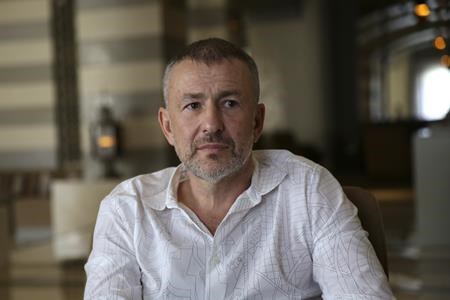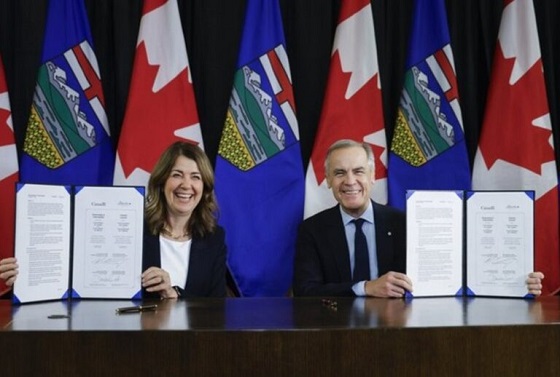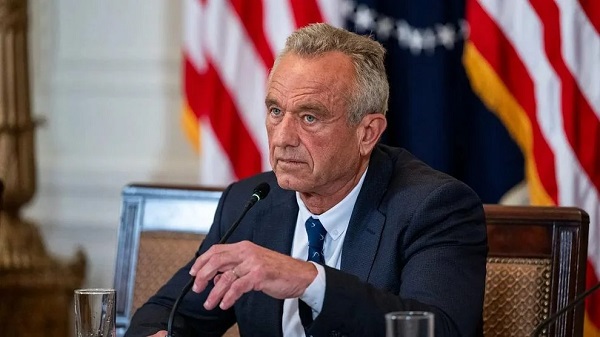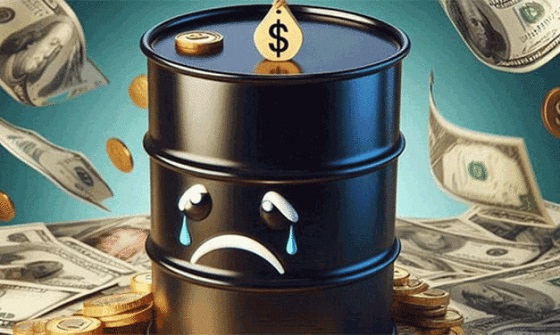Alberta
Russian billionaire couple claims Canadian sanctions are unjustified and unreasonable

Russian billionaire Andrey Melnichenko and his wife Aleksandra want to be taken off Canada’s sanctions list, claiming in Federal Court they’ve been wrongfully labelled as “elites and close associates” of the Russian regime.
The Melnichenkos filed two applications in the Federal Court of Canada in late March, seeking to quash a decision to place them under sanctions related to the war in Ukraine.
Court documents obtained by The Canadian Press reveal that the pair have been fighting their inclusion on Canada’s list of “designated persons” under its Russian sanctions regime since October 2022.
Back in February, the Trudeau government announced amendments to the Special Economic Measures (Russia) Regulations, which included placing the Melnichenkos on a list of 122 sanctioned individuals tied to the government of Russian President Vladimir Putin.
The couple claim the Canadian government has failed to provide them with any evidence to justify their inclusion on the list.
The list includes Russian elites and policymakers thought to be “engaged in activities that directly or indirectly facilitate, support, provide funding for or contribute to a violation or attempted violation of the sovereignty or territorial integrity of Ukraine.”
“Mr. Melnichenko does not have, and has not had, any association with the Government of Russia or President Putin,” Andrey Melnichenko’s application states. “He left Russia 20 years ago and has resided in Switzerland for the past 13 years. There is no reasonable basis for the Minister to believe otherwise.”
His wife, a former model and Serbian pop singer, claims she’s been wrongly targeted by Canadian sanctions, since she has no ties to Russia and doesn’t have any involvement in companies founded by her husband.
The couple’s Canadian lawyers, Scott Hutchison and Eleni Loutas with Henein Hutchison Robitaille LLP in Toronto, declined to comment on their cases.
Andrey Melnichenko’s public relations director, Alexander Byrikhin, did not immediately respond to an emailed request for comment.
Global Affairs Canada said in an emailed statement that it “cannot release information on individuals or entities listed under the Special Economic Measures (Russia) or comment on individual cases.”
“In response to Russia’s illegal and unjustifiable invasion of Ukraine, Canada has imposed hard-hitting sanctions against the Russian regime and those who enable it,” the statement said.
Aleksandra Melnichenko claims in her application that she’s a European citizen with “no connections to Russia whatsoever.”
She denies any involvement in two companies founded by her husband, fertilizer firm EuroChem, and SUEK, a coal company, both of which are owned by a trust administered in the European Union.
“She is merely a beneficiary of the discretionary trust managed by the independent trustee,” her application claims. “The latter is the legal owner of the named companies.”
In June 2022, EuroChem issued a “statement on ownership and control” following reports that Andrey Melnichenko had ceded ownership in the firm to his wife just before being sanctioned by the EU.
“EuroChem Group AG is not sanctioned, has never been sanctioned, and is free to continue with its important mission of supplying high-quality crop nutrients to world markets,” the statement said. “EuroChem is majority-owned and controlled by EU trustees of a trust, whose beneficiary, Aleksandra Melnichenko, has no majority ownership of, nor influence over, EuroChem. Therefore, EuroChem is not controlled by any sanctioned person.”
Aleksandra Melnichenko claims her “erroneous” inclusion on sanctions lists in the EU, Switzerland and Canada caused “difficulties for the companies’ operations worldwide, increasing the ongoing food and energy crisis.”
Andrey Melnichenko claims he’s been falsely portrayed as an “oligarch” in control of the companies, causing production disruptions at facilities in Europe after he was sanctioned by the EU.
His court application warns of similar “unintended consequences” in Canada, where the Russian sanctions list now includes more than 1,300 individuals.
It states that he’s not an oligarch but a “self-made businessman,” quoting a Forbes report referring to his fortune being made independently and free of ties to the Russian government under both Putin and Boris Yeltsin.
Melnichenko sits at number 58 on Forbes’ billionaires list with a net worth of more than $25 billion, which he amassed beginning in the early 1990s with a chain of currency exchange booths, before founding MDM Bank, and later EuroChem and SUEK.
“As has occurred in Europe, sanctioning Mr. Melnichenko could disrupt EuroChem and SUEK’s operations and detrimentally impact the global fertilizer supply which, in turn, has the potential to exacerbate the ongoing food shortage,” he claims in Federal Court.
Julia Webster, a Toronto-based international trade lawyer and partner at Baker McKenzie, said Canada’s approach to Russia contrasts with other countries currently under sanctions.
Unlike sanctions on Haiti, Myanmar, Iran and Sri Lanka, Canada’s sanctions on Russia represent a “true decoupling of economies,” she said, given the economic entanglements between western nations and Russia before its invasion of Ukraine.
She said Canada’s sanctions list mirrors that of allied nations.
“The sanctions are being implemented in co-ordination with Canada’s allies,” Webster said. “There is overlap on many of the prohibitions that are in place amongst the sanctions regimes between different countries and the people who are designated on those sanctions regimes, but there are also differences and Canada at this time seems to have actually one of the strictest regimes comparatively to its allies.”
In March 2022, the EU sanctioned Andrey Melnichenko, noting his attendance at a meeting held by Putin with Russian business leaders and oligarchs on the day of the invasion of Ukraine.
“The fact that he was invited to attend this meeting shows that he is a member of the closest circle of Vladimir Putin and that he is supporting or implementing actions or policies which undermine or threaten the territorial integrity, sovereignty and independence of Ukraine, as well as stability and security in Ukraine,” the EU said.
Shortly after Andrey Melnichenko was sanctioned in the EU, Italian authorities seized the couple’s $600-million “Sailing Yacht A,” but their other vessel, Motor Yacht A, valued at $300 million, avoided a similar fate by docking in the United Arab Emirates at the time.
In August 2022, the United Stated designated Melnichenko as a “Putin enabler,” pointing to his past involvement in Russia’s financial services sector.
“Listing carries serious social, economic and personal consequences,” the couple claims.
This report by The Canadian Press was first published April 16, 2023.
Darryl Greer, The Canadian Press
Alberta
Alberta Next Panel calls for less Ottawa—and it could pay off

From the Fraser Institute
By Tegan Hill
Last Friday, less than a week before Christmas, the Smith government quietly released the final report from its Alberta Next Panel, which assessed Alberta’s role in Canada. Among other things, the panel recommends that the federal government transfer some of its tax revenue to provincial governments so they can assume more control over the delivery of provincial services. Based on Canada’s experience in the 1990s, this plan could deliver real benefits for Albertans and all Canadians.
Federations such as Canada typically work best when governments stick to their constitutional lanes. Indeed, one of the benefits of being a federalist country is that different levels of government assume responsibility for programs they’re best suited to deliver. For example, it’s logical that the federal government handle national defence, while provincial governments are typically best positioned to understand and address the unique health-care and education needs of their citizens.
But there’s currently a mismatch between the share of taxes the provinces collect and the cost of delivering provincial responsibilities (e.g. health care, education, childcare, and social services). As such, Ottawa uses transfers—including the Canada Health Transfer (CHT)—to financially support the provinces in their areas of responsibility. But these funds come with conditions.
Consider health care. To receive CHT payments from Ottawa, provinces must abide by the Canada Health Act, which effectively prevents the provinces from experimenting with new ways of delivering and financing health care—including policies that are successful in other universal health-care countries. Given Canada’s health-care system is one of the developed world’s most expensive universal systems, yet Canadians face some of the longest wait times for physicians and worst access to medical technology (e.g. MRIs) and hospital beds, these restrictions limit badly needed innovation and hurt patients.
To give the provinces more flexibility, the Alberta Next Panel suggests the federal government shift tax points (and transfer GST) to the provinces to better align provincial revenues with provincial responsibilities while eliminating “strings” attached to such federal transfers. In other words, Ottawa would transfer a portion of its tax revenues from the federal income tax and federal sales tax to the provincial government so they have funds to experiment with what works best for their citizens, without conditions on how that money can be used.
According to the Alberta Next Panel poll, at least in Alberta, a majority of citizens support this type of provincial autonomy in delivering provincial programs—and again, it’s paid off before.
In the 1990s, amid a fiscal crisis (greater in scale, but not dissimilar to the one Ottawa faces today), the federal government reduced welfare and social assistance transfers to the provinces while simultaneously removing most of the “strings” attached to these dollars. These reforms allowed the provinces to introduce work incentives, for example, which would have previously triggered a reduction in federal transfers. The change to federal transfers sparked a wave of reforms as the provinces experimented with new ways to improve their welfare programs, and ultimately led to significant innovation that reduced welfare dependency from a high of 3.1 million in 1994 to a low of 1.6 million in 2008, while also reducing government spending on social assistance.
The Smith government’s Alberta Next Panel wants the federal government to transfer some of its tax revenues to the provinces and reduce restrictions on provincial program delivery. As Canada’s experience in the 1990s shows, this could spur real innovation that ultimately improves services for Albertans and all Canadians.
Alberta
Ottawa-Alberta agreement may produce oligopoly in the oilsands

From the Fraser Institute
By Jason Clemens and Elmira Aliakbari
The federal and Alberta governments recently jointly released the details of a memorandum of understanding (MOU), which lays the groundwork for potentially significant energy infrastructure including an oil pipeline from Alberta to the west coast that would provide access to Asia and other international markets. While an improvement on the status quo, the MOU’s ambiguity risks creating an oligopoly.
An oligopoly is basically a monopoly but with multiple firms instead of a single firm. It’s a market with limited competition where a few firms dominate the entire market, and it’s something economists and policymakers worry about because it results in higher prices, less innovation, lower investment and/or less quality. Indeed, the federal government has an entire agency charged with worrying about limits to competition.
There are a number of aspects of the MOU where it’s not sufficiently clear what Ottawa and Alberta are agreeing to, so it’s easy to envision a situation where a few large firms come to dominate the oilsands.
Consider the clear connection in the MOU between the development and progress of Pathways, which is a large-scale carbon capture project, and the development of a bitumen pipeline to the west coast. The MOU explicitly links increased production of both oil and gas (“while simultaneously reaching carbon neutrality”) with projects such as Pathways. Currently, Pathways involves five of Canada’s largest oilsands producers: Canadian Natural, Cenovus, ConocoPhillips Canada, Imperial and Suncor.
What’s not clear is whether only these firms, or perhaps companies linked with Pathways in the future, will have access to the new pipeline. Similarly, only the firms with access to the new west coast pipeline would have access to the new proposed deep-water port, allowing access to Asian markets and likely higher prices for exports. Ottawa went so far as to open the door to “appropriate adjustment(s)” to the oil tanker ban (C-48), which prevents oil tankers from docking at Canadian ports on the west coast.
One of the many challenges with an oligopoly is that it prevents new entrants and entrepreneurs from challenging the existing firms with new technologies, new approaches and new techniques. This entrepreneurial process, rooted in innovation, is at the core of our economic growth and progress over time. The MOU, though not designed to do this, could prevent such startups from challenging the existing big players because they could face a litany of restrictive anti-development regulations introduced during the Trudeau era that have not been reformed or changed since the new Carney government took office.
And this is not to criticize or blame the companies involved in Pathways. They’re acting in the interests of their customers, staff, investors and local communities by finding a way to expand their production and sales. The fault lies with governments that were not sufficiently clear in the MOU on issues such as access to the new pipeline.
And it’s also worth noting that all of this is predicated on an assumption that Alberta can achieve the many conditions included in the MOU, some of which are fairly difficult. Indeed, the nature of the MOU’s conditions has already led some to suggest that it’s window dressing for the federal government to avoid outright denying a west coast pipeline and instead shift the blame for failure to the Smith government.
Assuming Alberta can clear the MOU’s various hurdles and achieve the development of a west coast pipeline, it will certainly benefit the province and the country more broadly to diversify the export markets for one of our most important export products. However, the agreement is far from ideal and could impose much larger-than-needed costs on the economy if it leads to an oligopoly. At the very least we should be aware of these risks as we progress.

Elmira Aliakbari
-

 Alberta2 days ago
Alberta2 days agoOttawa-Alberta agreement may produce oligopoly in the oilsands
-

 Business2 days ago
Business2 days agoSome Of The Wackiest Things Featured In Rand Paul’s New Report Alleging $1,639,135,969,608 In Gov’t Waste
-

 Energy2 days ago
Energy2 days ago‘The electric story is over’
-

 Energy2 days ago
Energy2 days agoWestern Canada’s supply chain for Santa Claus
-

 Energy2 days ago
Energy2 days agoThe Top News Stories That Shaped Canadian Energy in 2025 and Will Continue to Shape Canadian Energy in 2026
-

 International2 days ago
International2 days ago$2.6 million raised for man who wrestled shotgun from Bondi Beach terrorist
-

 armed forces16 hours ago
armed forces16 hours agoRemembering Afghanistan and the sacrifices of our military families
-

 Fraser Institute16 hours ago
Fraser Institute16 hours agoHow to talk about housing at the holiday dinner table











